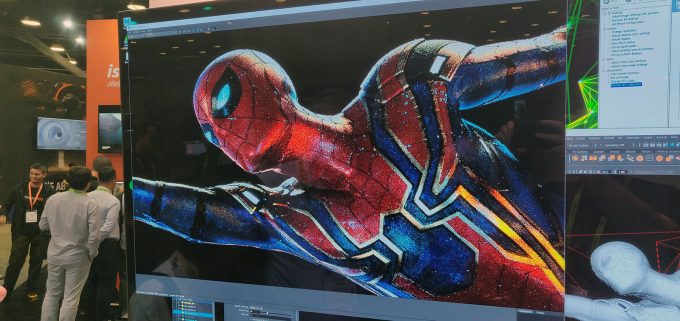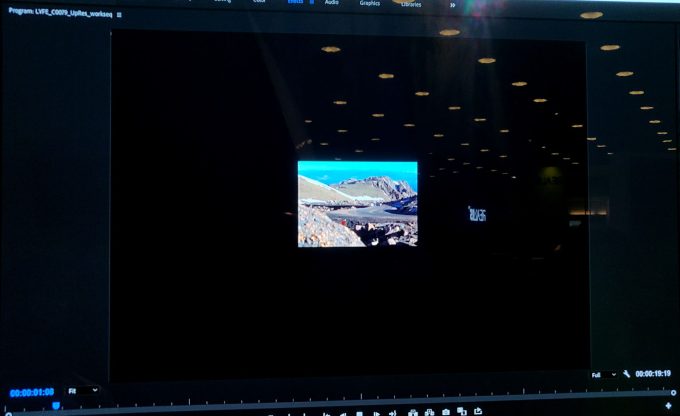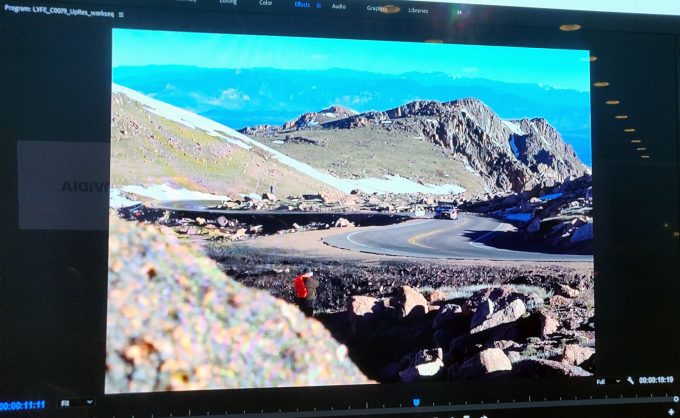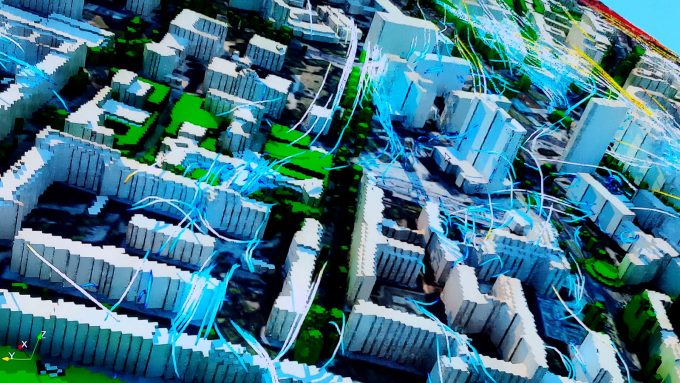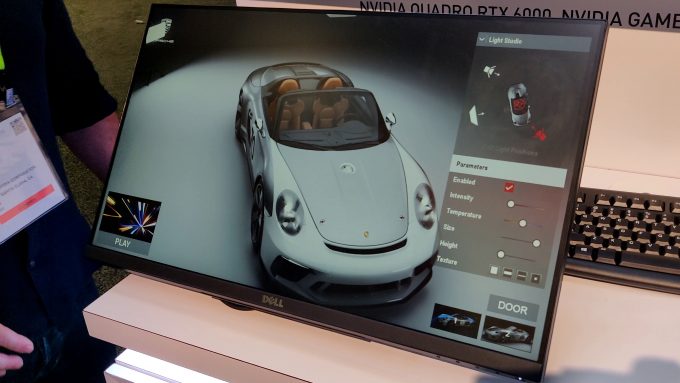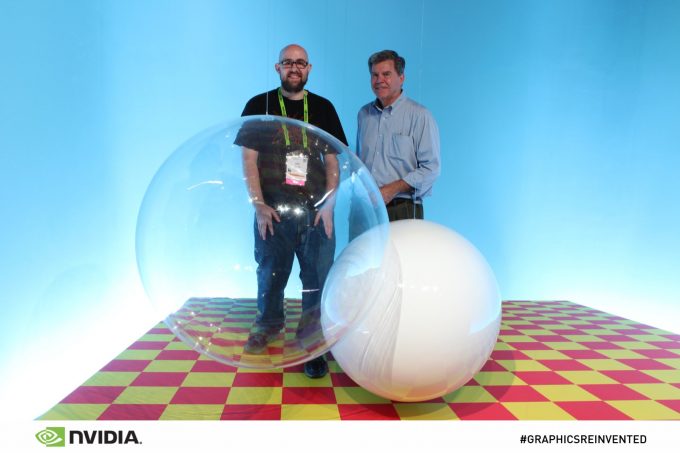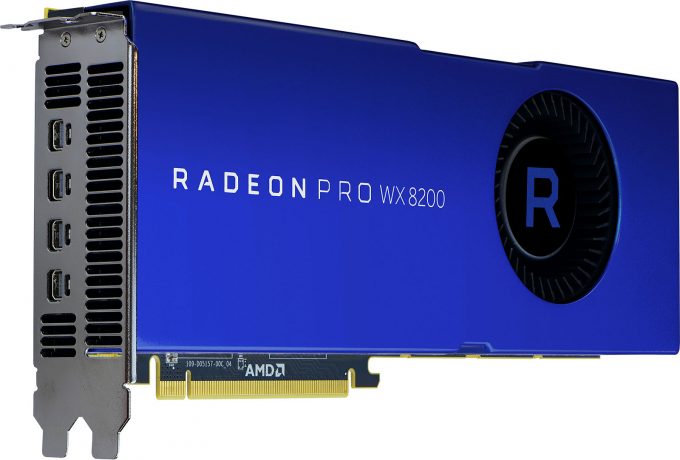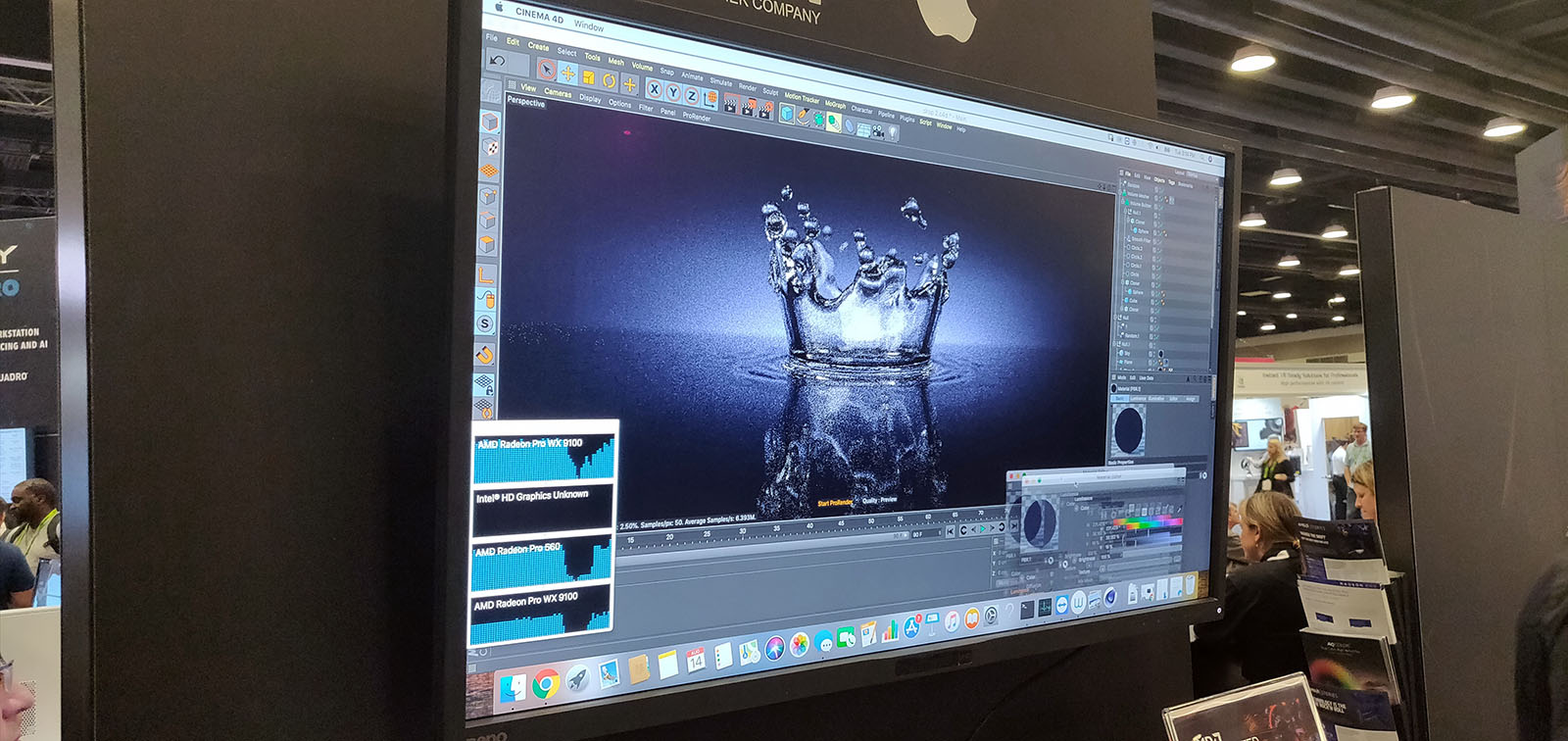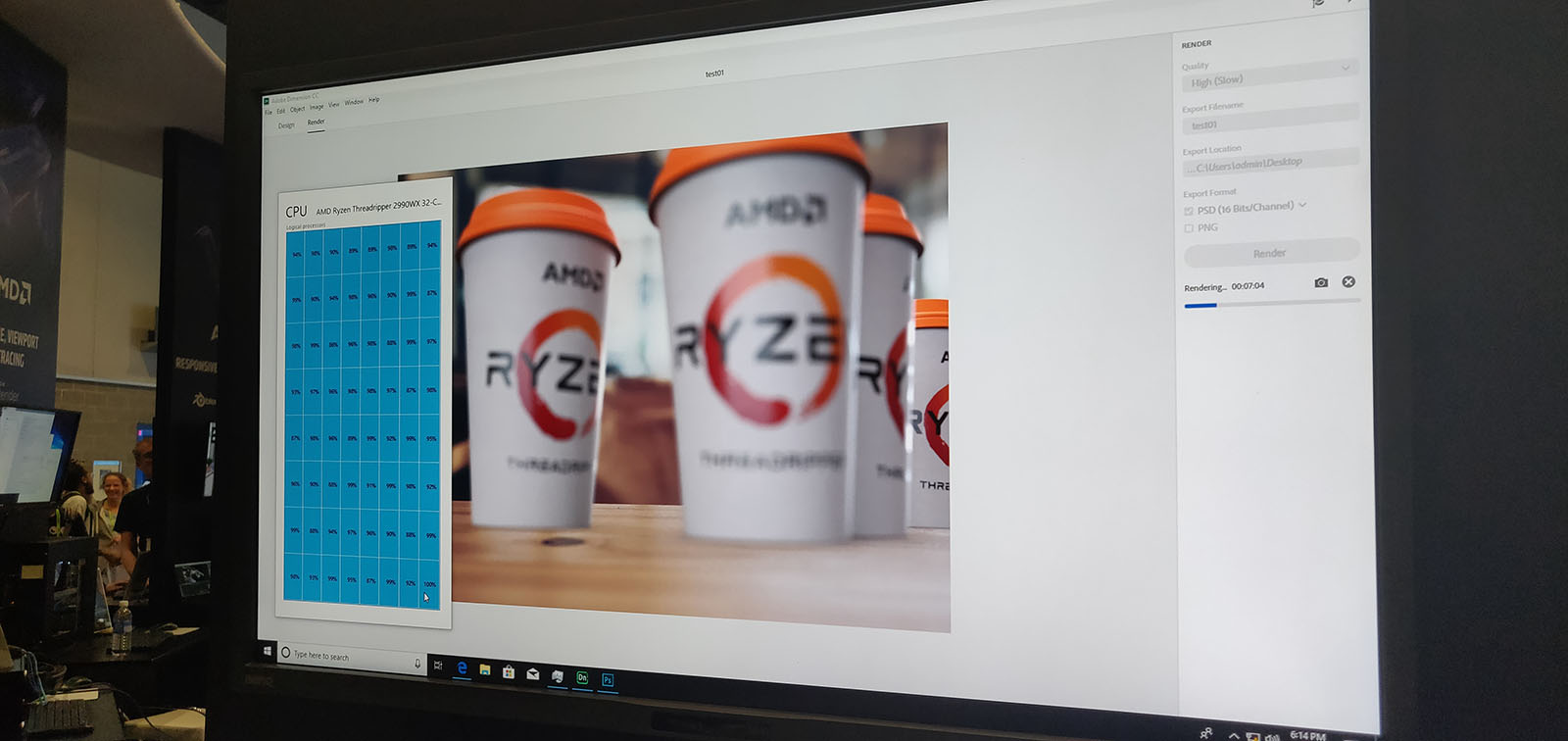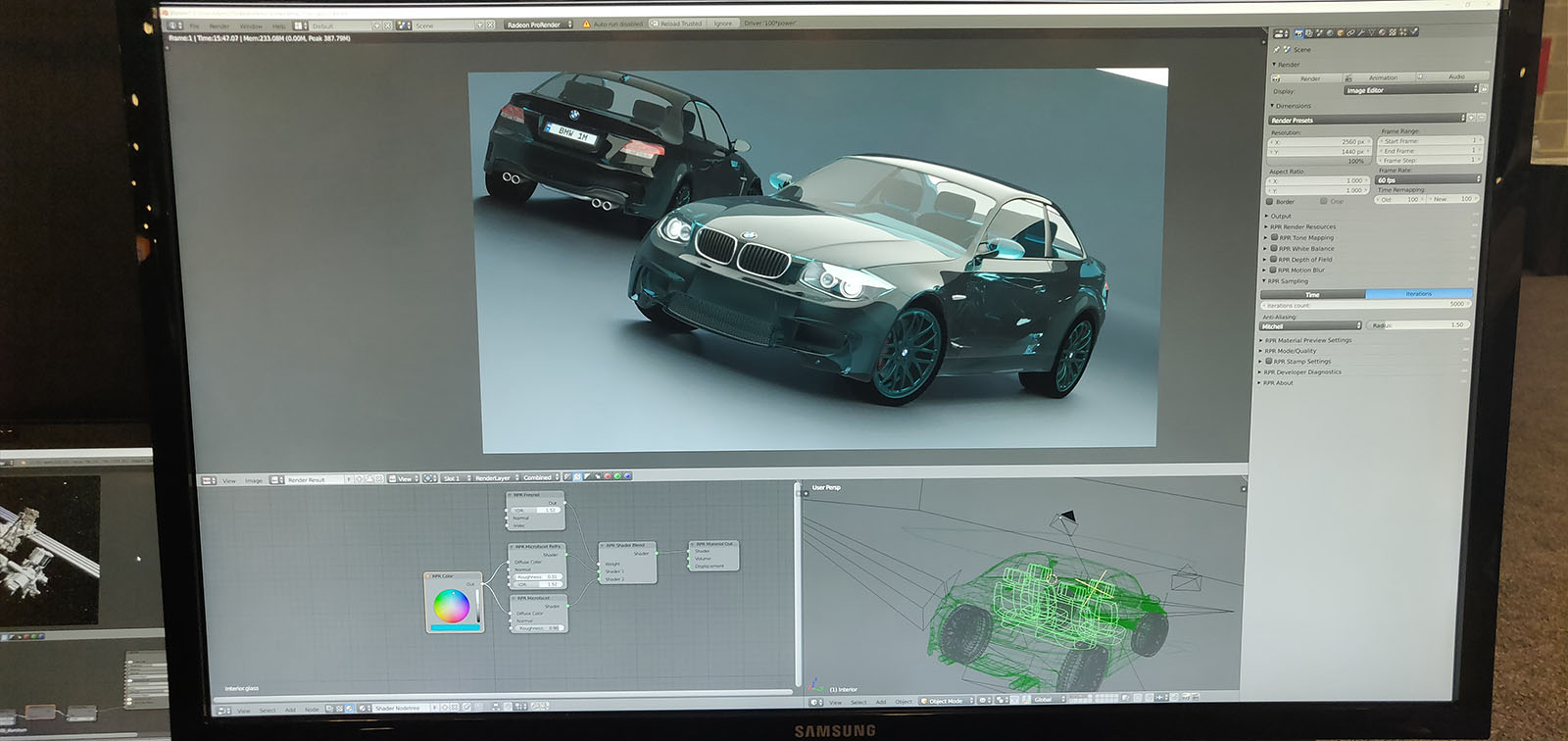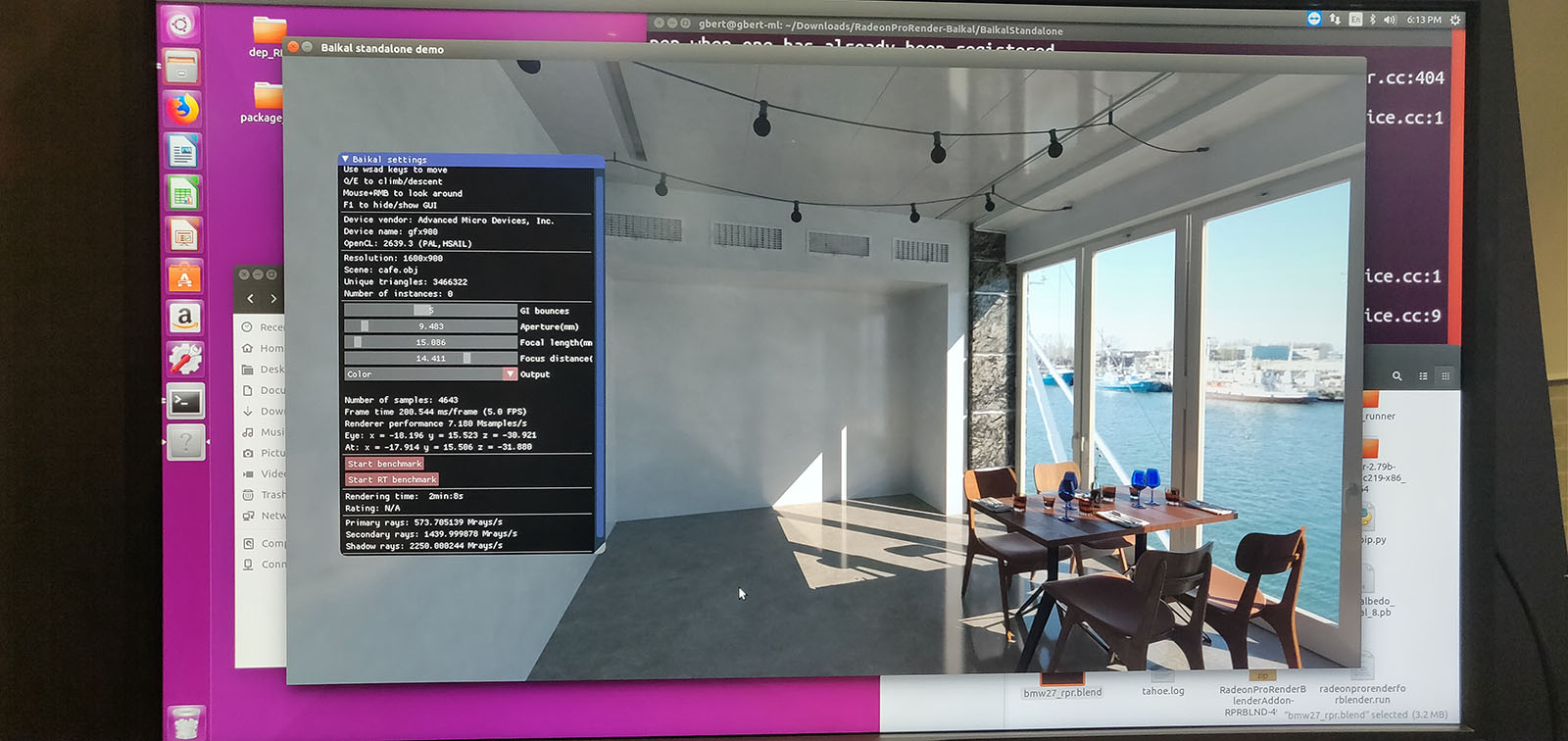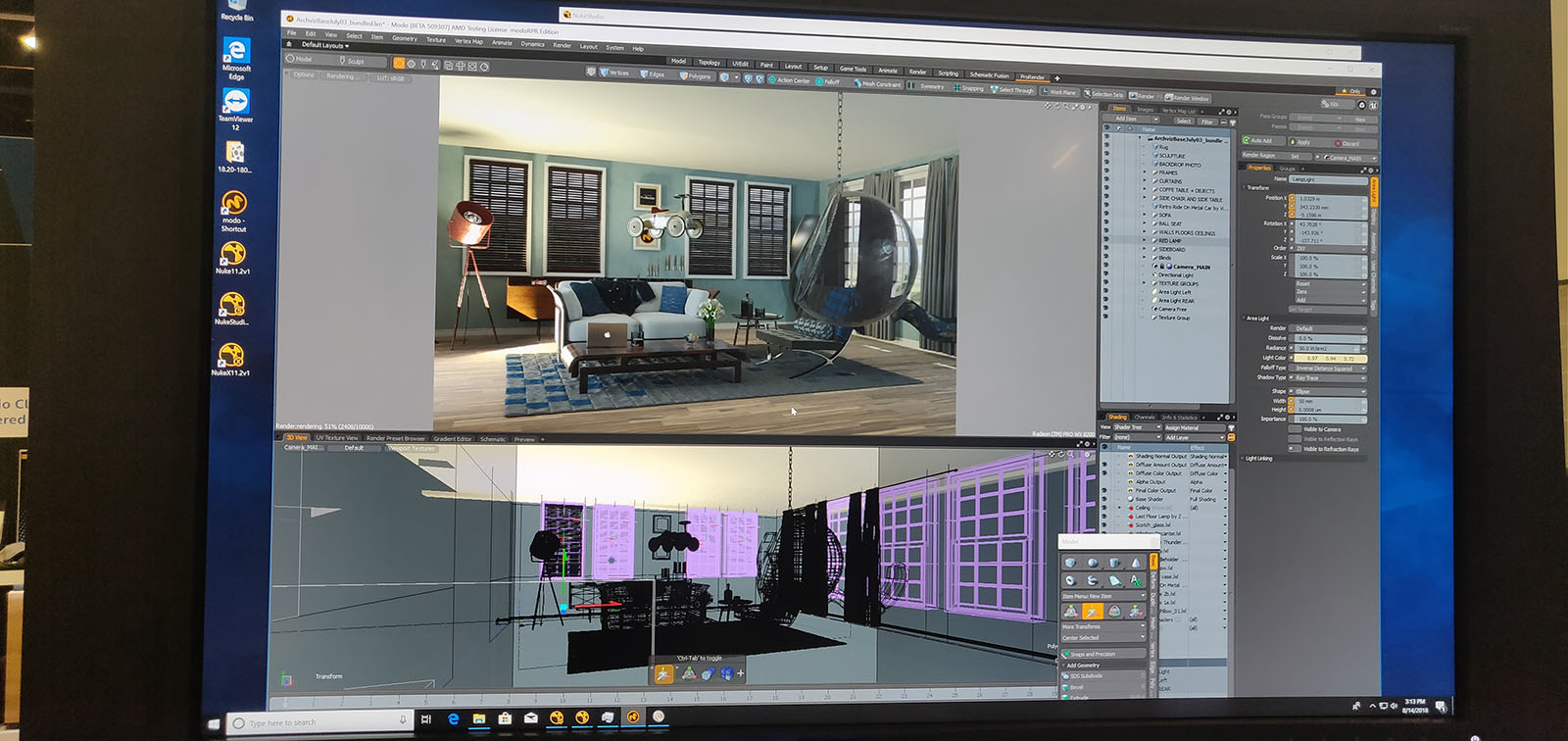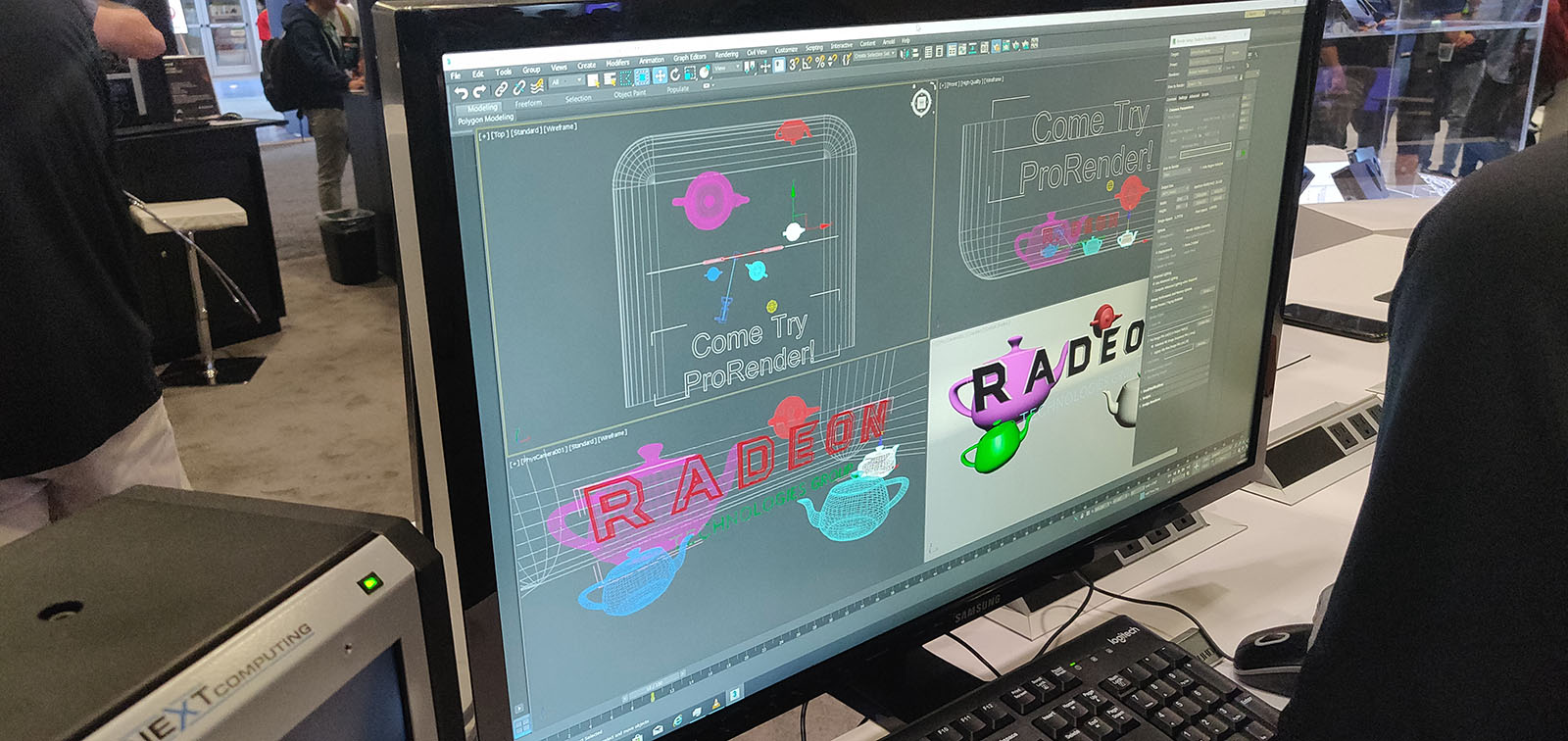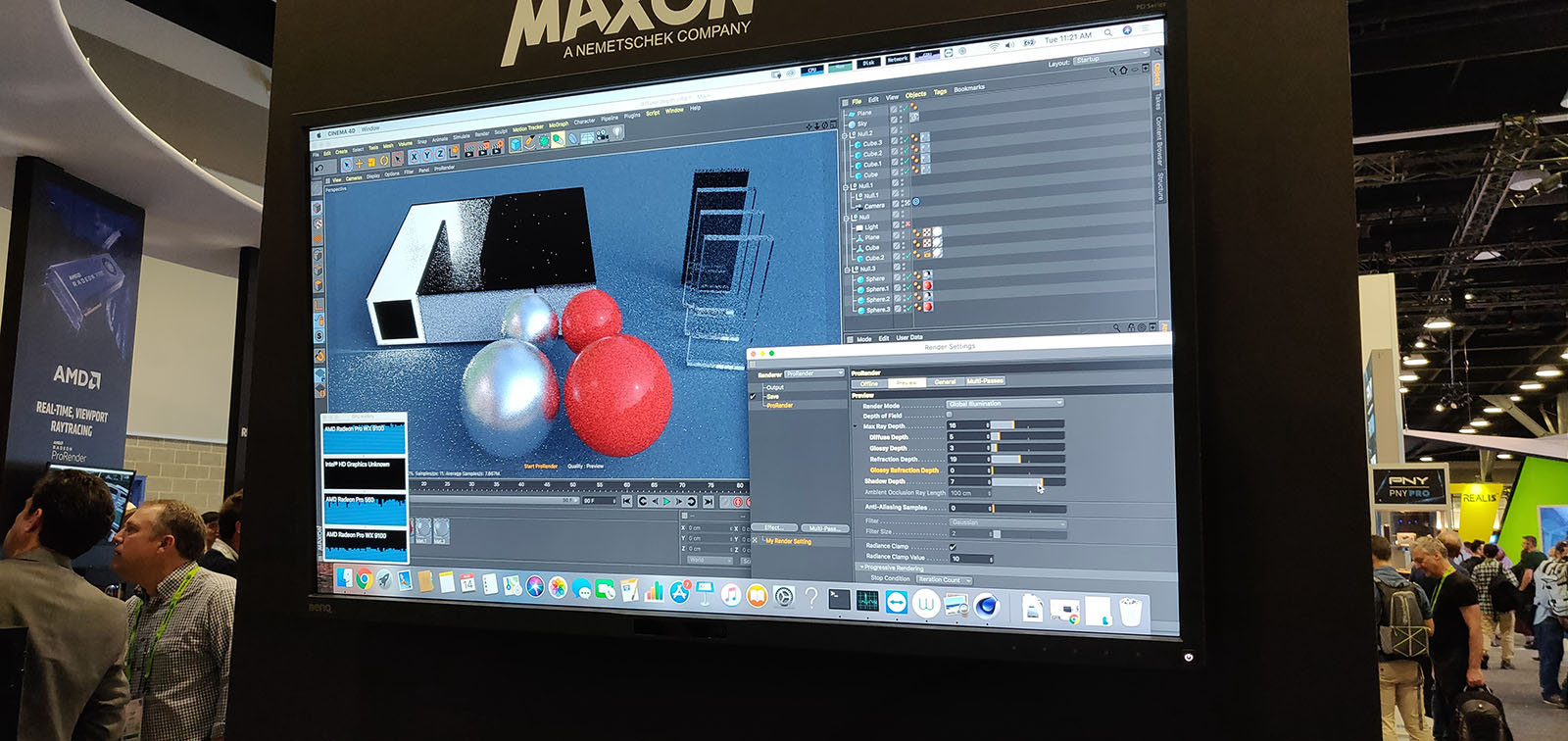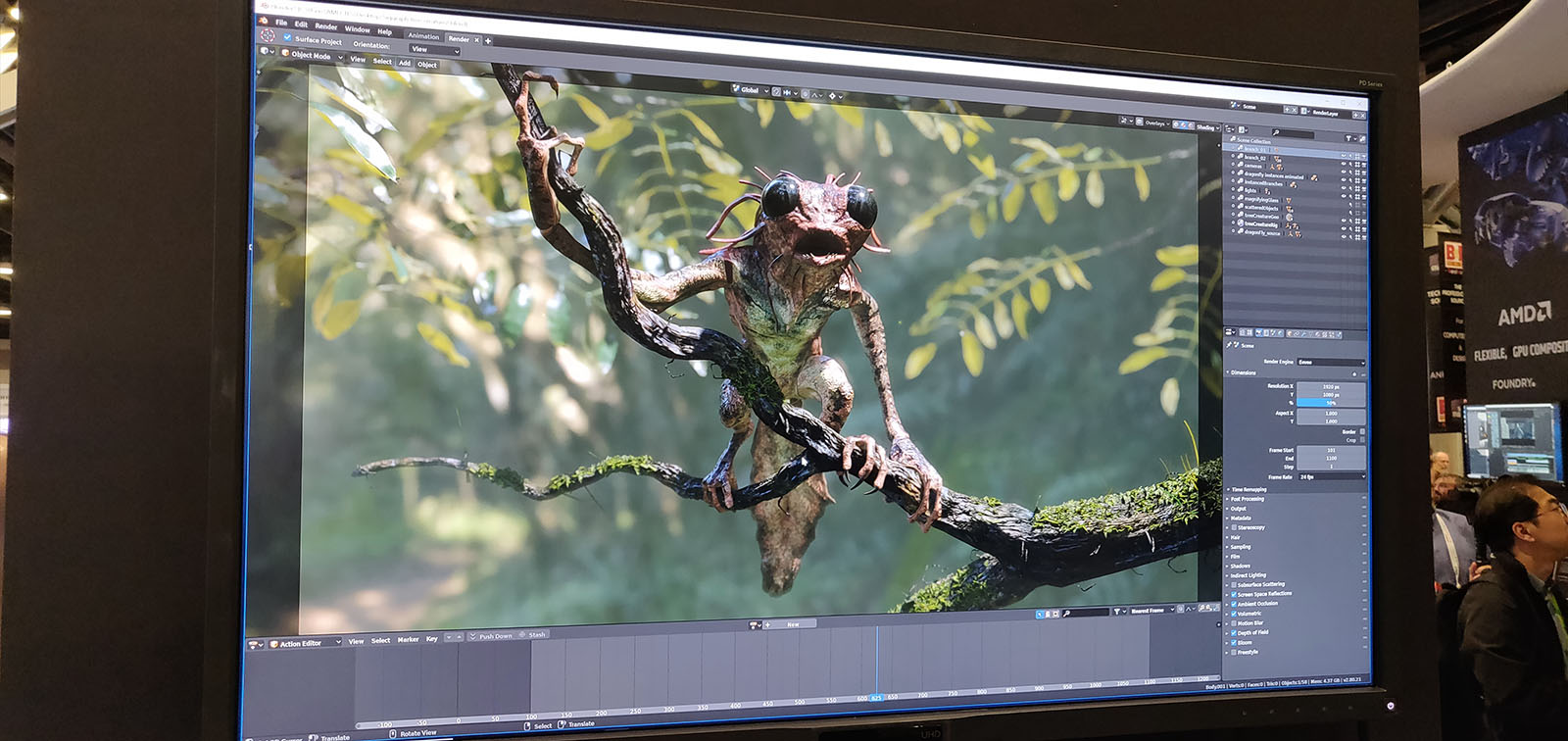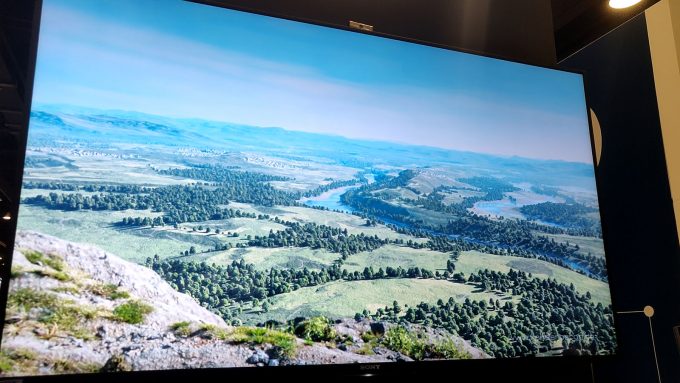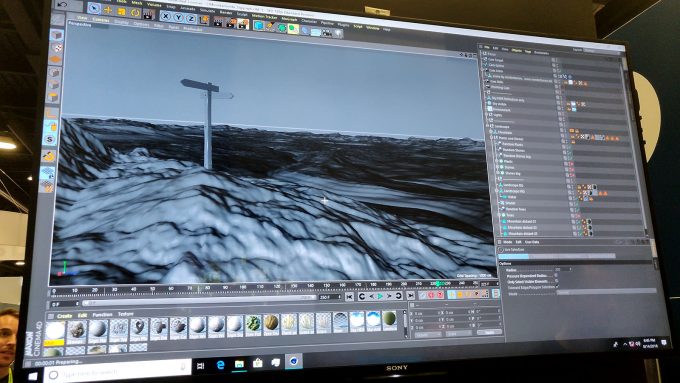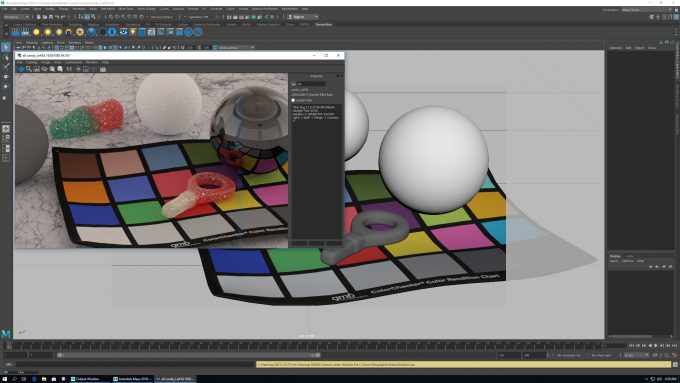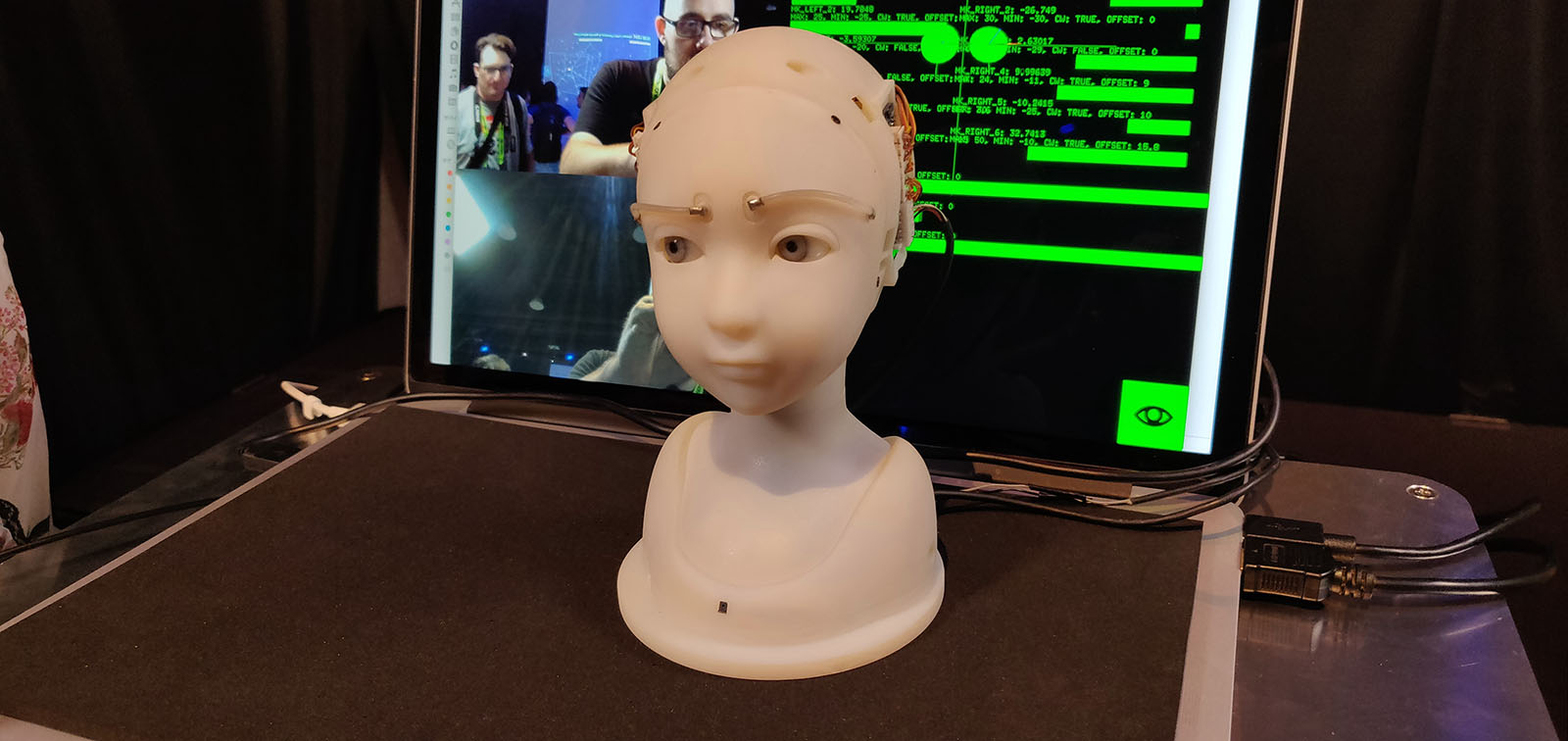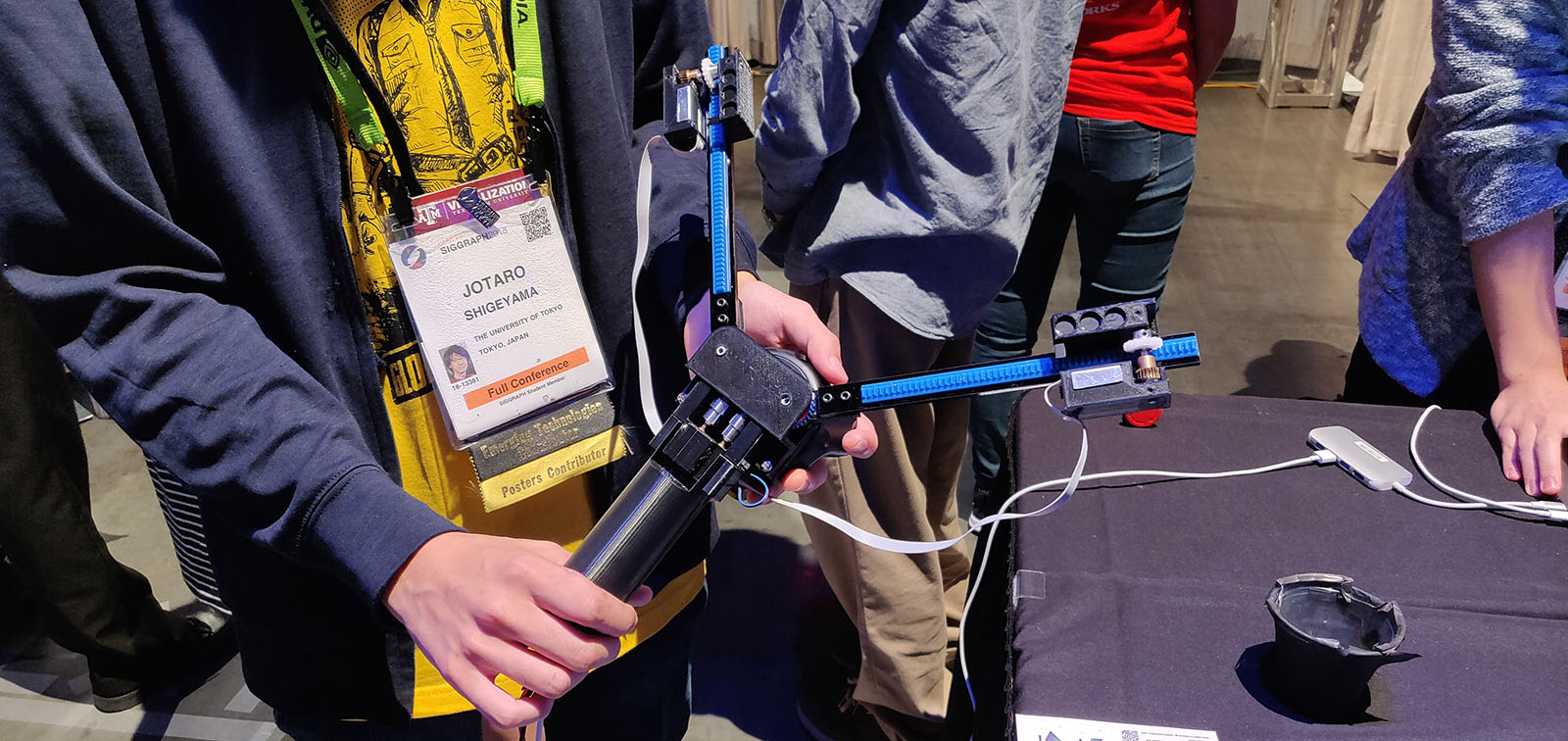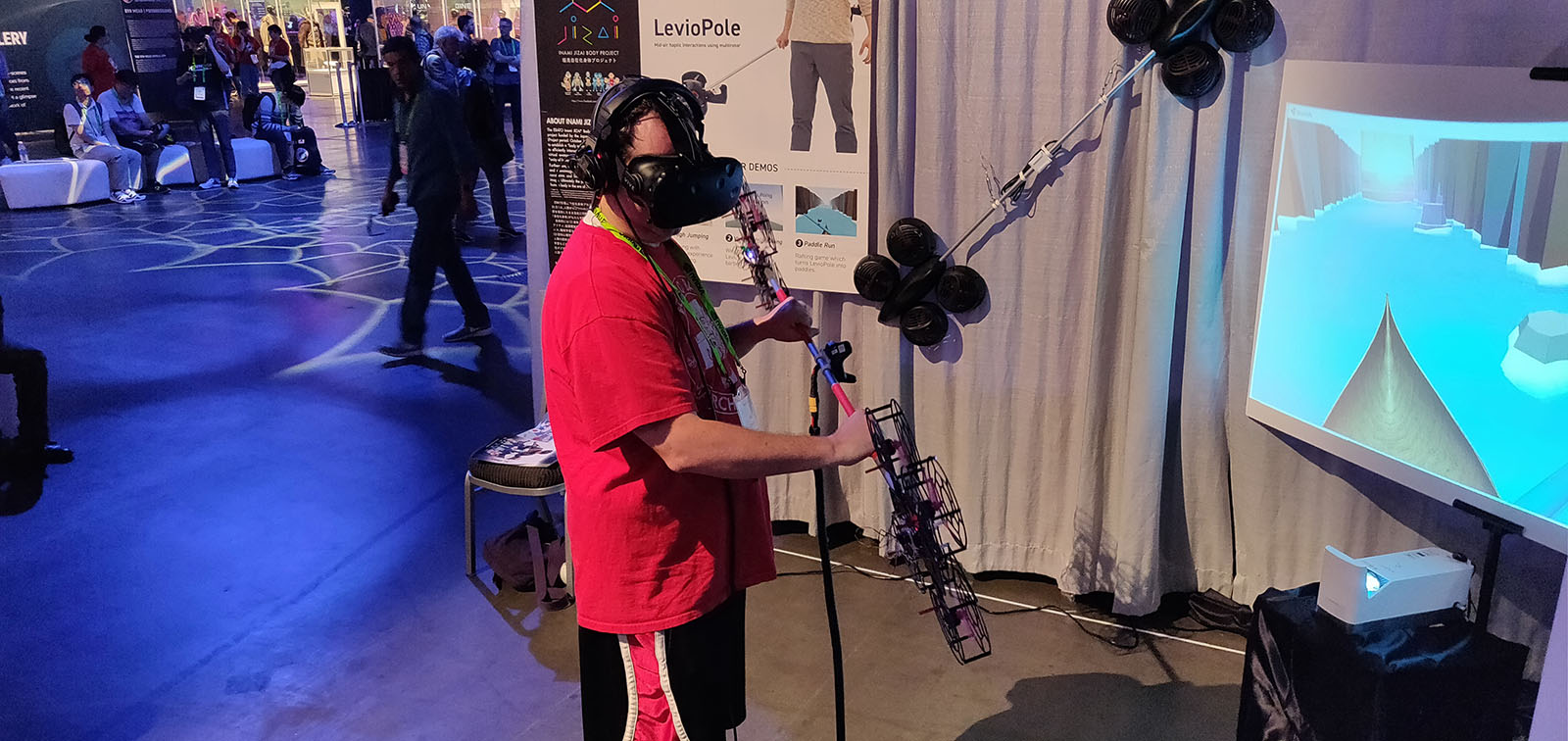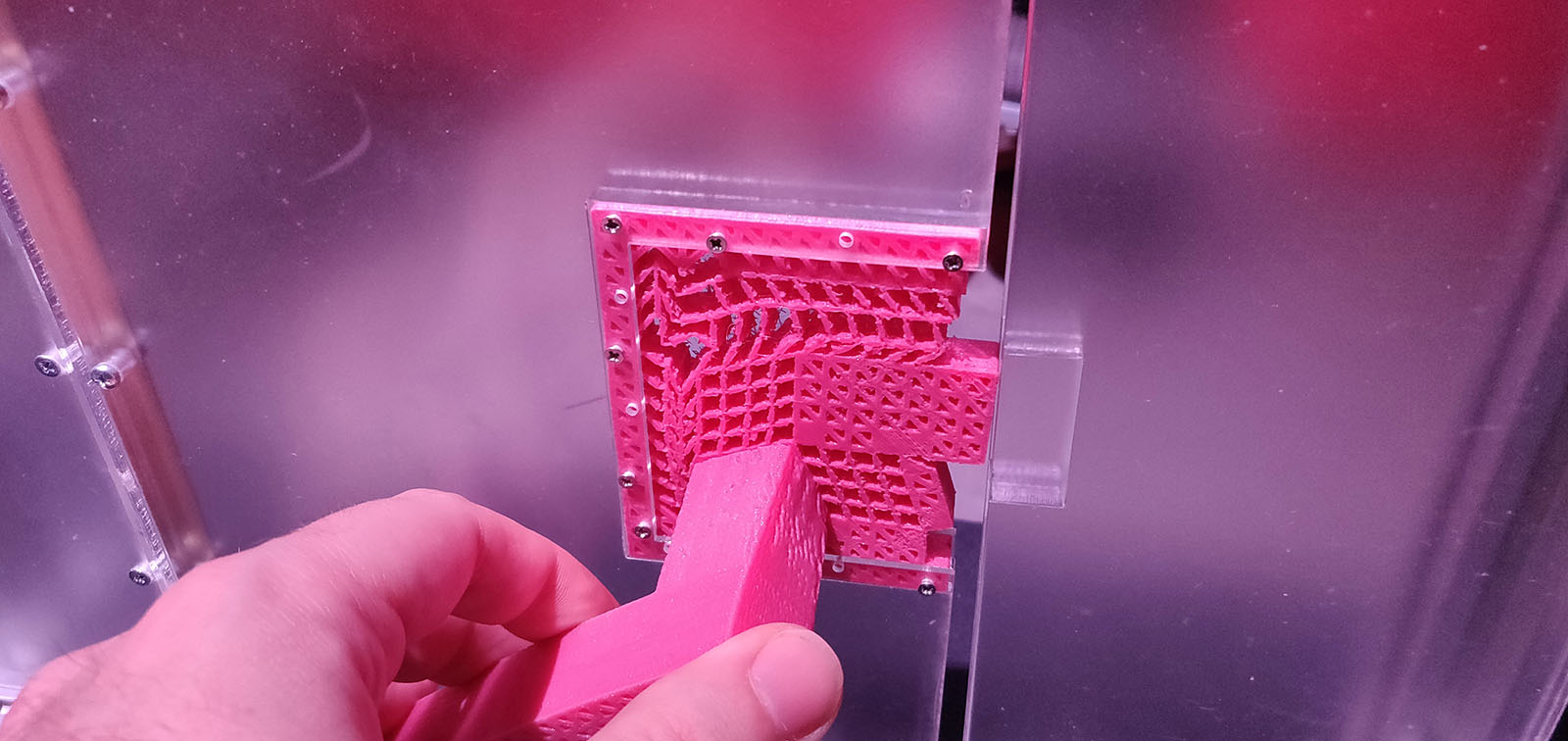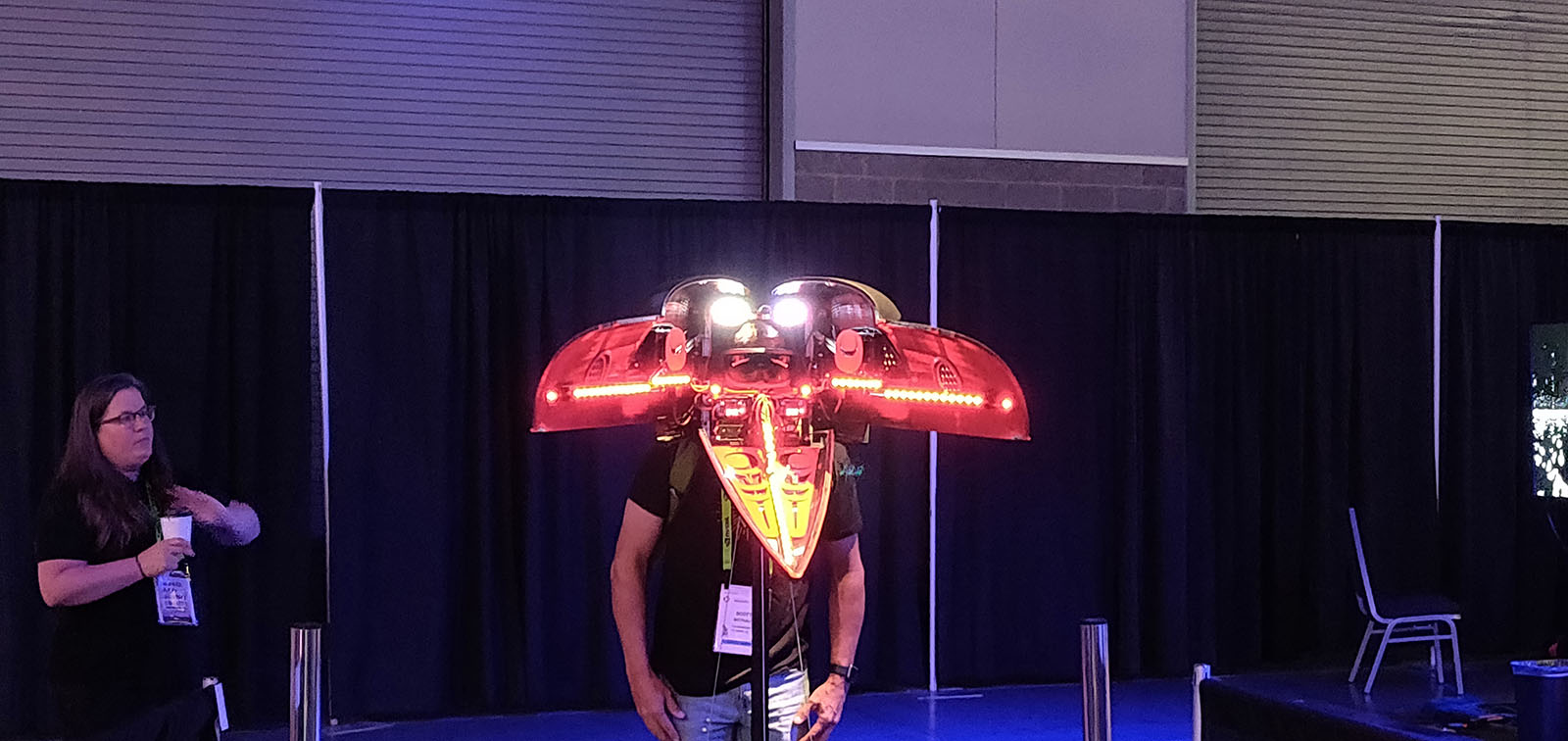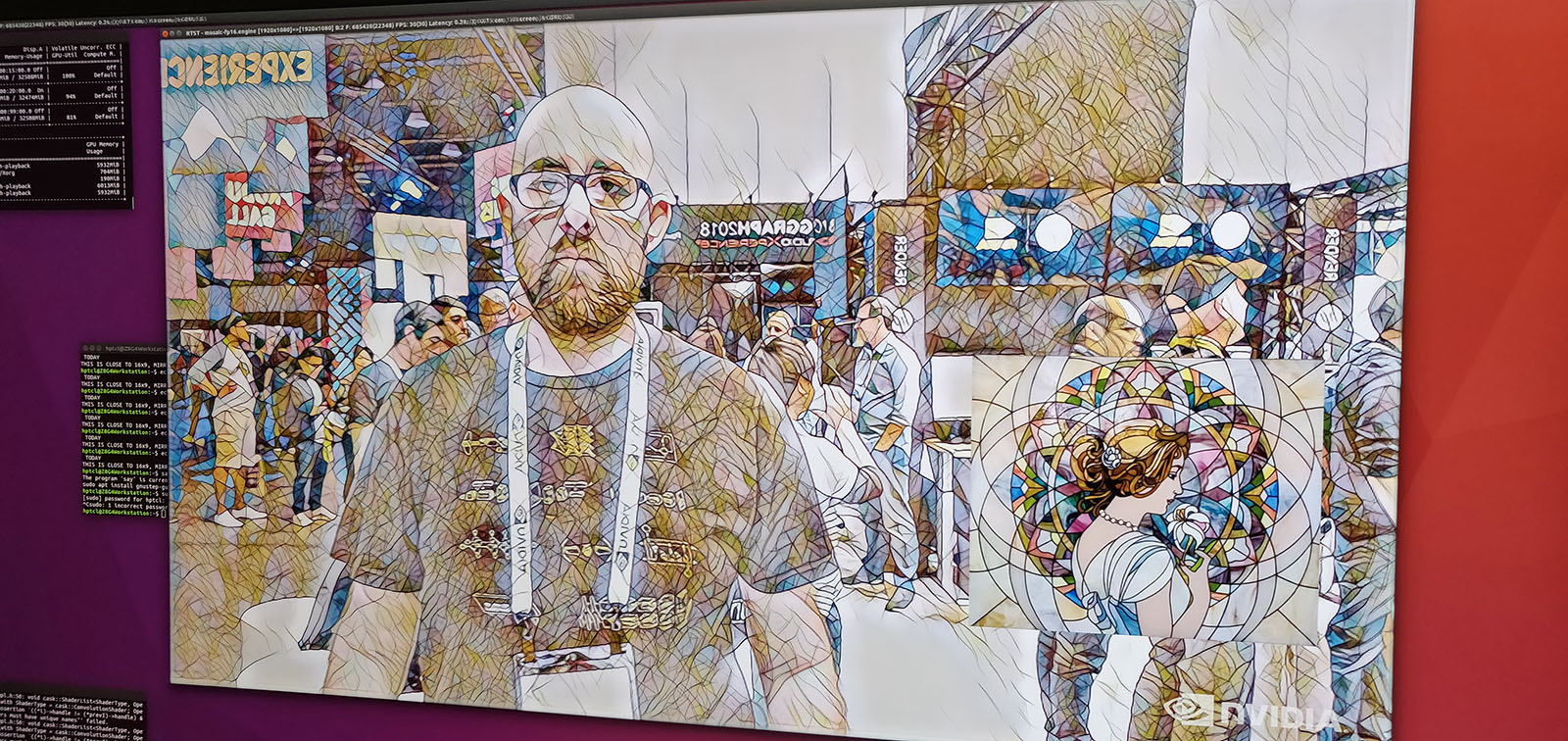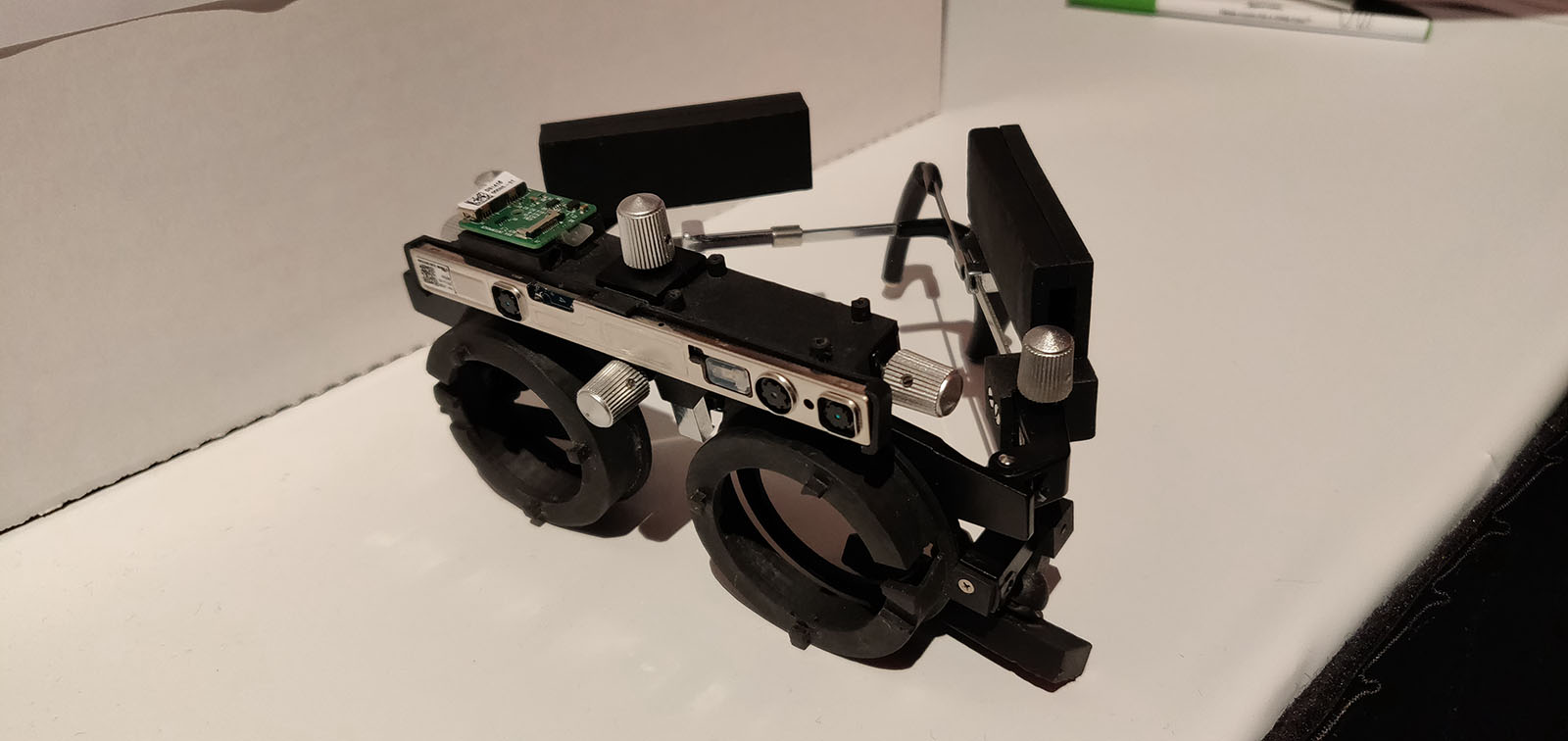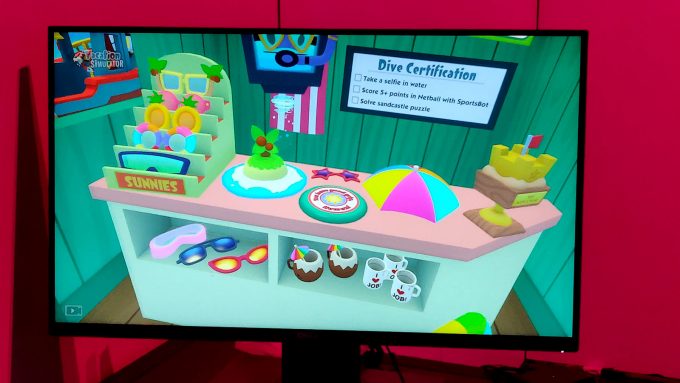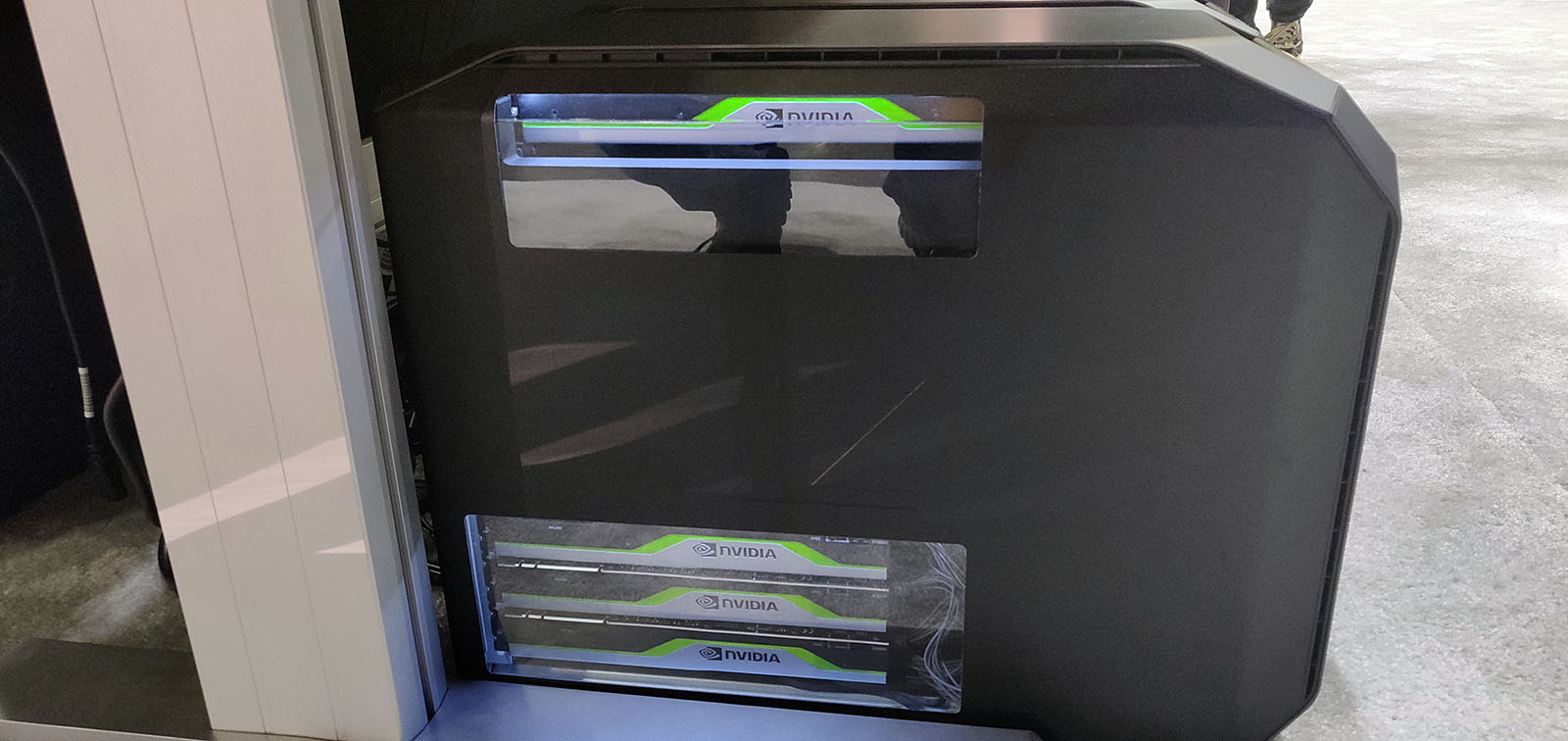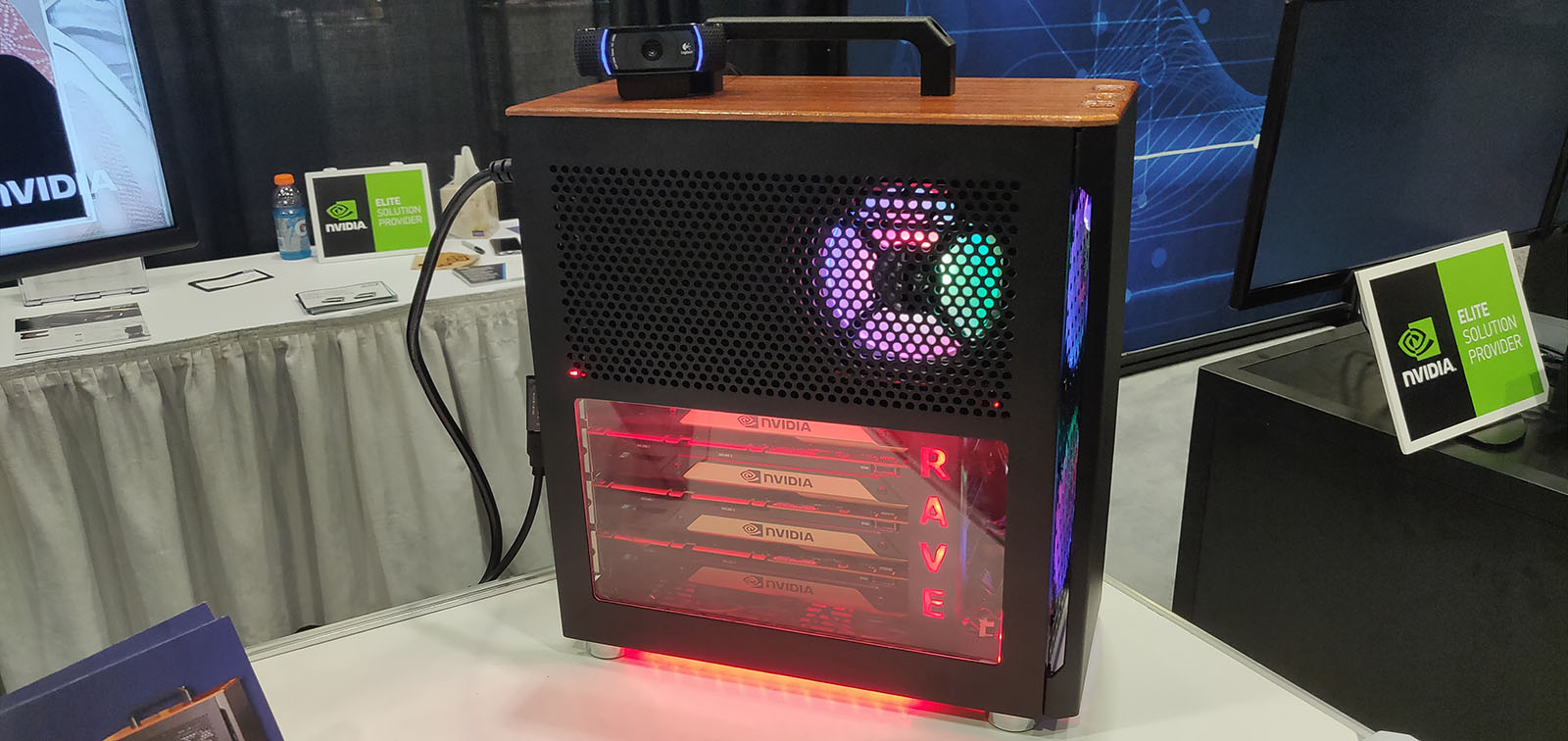- Qualcomm Launches Snapdragon 4 Gen 2 Mobile Platform
- AMD Launches Ryzen PRO 7000 Series Mobile & Desktop Platform
- Intel Launches Sleek Single-Slot Arc Pro A60 Workstation Graphics Card
- NVIDIA Announces Latest Ada Lovelace Additions: GeForce RTX 4060 Ti & RTX 4060
- Maxon Redshift With AMD Radeon GPU Rendering Support Now Available
Rays Of Light: Takeaways From An Action-Packed SIGGRAPH 2018

SIGGRAPH’s 2018 conference in Vancouver, BC, proved to be an action-packed one. Both AMD and NVIDIA had new GPU wares to show off, and Intel threatened about what’s to come in 2020. We also saw the release of new renderers, advanced compute technologies, and found a whole lot of inspiration.
SIGGRAPH is the place to be if your job revolves around graphics technology. You not only get to see the latest graphics tech up close, you also get to peer into the future. You of course also get to refine your craft by keeping-up on cutting-edge technologies and techniques.
This year’s flagship SIGGRAPH took place in a beautiful Vancouver, British Columbia, where the convention center is only a stone’s throw from up to three docked cruise ships each and every day during the active season. The marine air was definitely refreshing, but so was the tech inside of the convention center’s walls.
This recap has to begin with the announcement that resonates with this benchmarker’s heart more than any other from the show: NVIDIA’s Quadro RTX line. We took a look at what RTX was about back at GTC 2018, but in a nutshell, it’s a technology that hinges on built-in Tensor cores (separate from the typical CUDA cores) to accelerate ray tracing rendering with the help of deep-learning and neural networks. How could that impact designers? Check out the cinema-quality render you can see in the shot here – generated mere seconds after a change was made to the scene:
But to say that RTX is all about ray tracing would be inaccurate, because while that’s a major focus here, NVIDIA had many demos on the SIGGRAPH show floor to highlight other things those Tensor cores can do.
That includes taking photos of a certain quality, and then upscaling them to reveal the best results you’ve ever seen. If effectively increasing the size of still images is impressive, then doing the same for video is downright amazing. Here’s an example of a low-resolution video that was run against a neural network to deliver extremely convincing upscaling results.
Another RTX demo worth noting is the one involving crunching through a massive dataset to accurately predict wind behavior in a city. The example you see here involves ParaView, an open-source application designed around analyzing large datasets like these. Another example would be using RTX to detect hotspots caused by proposed architecture, and our friend, the sun.
Will we see RTX on the gaming side anytime soon? If the rumor mill proves true, the answer is a pretty resounding “yes”. It’s going to be pretty interesting to see how NVIDIA and game developers will deal with tensor cores to improve our gameplay – if the rumor proves true, of course.
To give an idea of the hype of RTX on the pro side, many vendors are expected to release support for the technology by the end of the year (or at least soon after). Those include Adobe, Allegorithmic, ANSYS, Altair, Autodesk, Blackmagic Design, Chaos Group, Dassault Systemes, Epic, Isotropix, Redshift, OTOY, Pixar, and Unity – to name a few.
The last thing I will say about ray tracing is that I had the opportunity to get a picture taken with the creator of recursive ray tracing, Turner Whitted. We were lucky enough to interview Turner a couple of weeks ago, so being able to appear in a mock-up of his 1979 SIGGRAPH demo was pretty awesome.
On the blue side of the fence, AMD also released a new GPU, coming to us in the form of the Radeon Pro WX 8200. While this card uses a new generational number scheme, it’s based around the same Vega architecture as the WX 9100. Aside from a small drop in performance (vs. that GPU), the memory density hit is the most notable one, dropping from 16GB to 8GB. That said, the pricetag of the WX 8200 is $999, whereas the WX 9100 is $2199 – so if you don’t explicitly need greater than 8GB of VRAM in your development work, it could be an attractive option.
Tying into that, I talked to someone from AMD about the limited framebuffer, and was told that with the audience the card is targeted at, the framebuffer is not generally the problem. I was shown a complex scene running a live render, and was told that the 8GB card inside wasn’t proving to be a roadblock – a good sign for those who are hoping for a lot of GPU workstation performance for the buck. But as always, it pays to know your workload.
On a side note – I noticed a Radeon Pro Duo on display at SIGGRAPH, which I found interesting since I had read before that the card was considered end-of-lifed. It turns out that… is not true. So if you need Radeon Pro with 32GB of aggregate memory, that option is still floating about out there.
AMD’s booth was very busy at this year’s SIGGRAPH, laced with demos showing off the power of the new 32-core Ryzen Threadripper, as well as the WX 8200 and WX 9100 tearing through GPU workloads. I got to see some previews of the upcoming Blender 2.80, which as a non-user looks like a substantial upgrade, both with the feature set and interface.
Cinema 4D’s new R20 version was shown-off as well, in particular with the latest Radeon ProRender renderer, which now takes advantage of heterogeneous rendering, making the most of your CPU and GPU. I’ve yet to be able to tackle this performance testing, but that testing will come.
Almost right in a row, NVIDIA’s booth at SIGGRAPH was followed by AMD, and AMD’s was followed by Intel’s, which had the simplest presence of the bunch. The company did have one cool demo on-hand, though, showing the possibility of a procedurally generated world in Cinema 4D, one that’s both very convincing, and complex – where no two trees are the same.
This test was largely acting as an exerciser for the Core i9-7980XE 18-core processor under-the-hood. Unfortunately, a live generation of the landmass didn’t take place on the show floor, presumably because it isn’t exactly a quick process. What you see here are stills from a looping video.
Despite the landmass looking rather plain in things to see and do, it still looks just so explorable. It’s not hard to see how this could be used by game developers to quickly generate new maps based on their specific needs.
We will set our graphics free. #SIGGRAPH2018 pic.twitter.com/vAoSe4WgZX
— Intel Graphics (@IntelGraphics) August 15, 2018
Another cool announcement can be seen with the tweet above. During the show, Intel decided to drop a hint about its upcoming discrete graphics card – set for release in 2020. The announcement debuted at 11:12 local time (PT), and further hints have suggested that’s not an accident. Let the speculation begin.
At SIGGRAPH, you can’t walk two feet without seeing something being rendered, so it’s no surprise that many software vendors use SIGGRAPH to talk about their latest software creations. At quick mention, Epic recently released its 4.20 version of Unreal Engine, while Unity dropped 2018.2 last month.
The most special renderer release could have been argued to be Pixar’s RenderMan, celebrating its 30th year in existence. This renderer was used back in the day to churn out animation for such movies as Toy Story, Beauty and the Beast, and a movie near and dear to my heart: Terminator 2: Judgment Day.
Since I’ve been on a kick of testing different renderers lately, you can probably expect RenderMan to make an appearance in our performance content in the future. Similarly, Blackmagic Design’s DaVinci Resolve launched version 15 during SIGGRAPH, and it happens to be another application we plan to explore performance for more in the not-so-distant future, with greater depth than was seen in our Threadripper 2990WX and 2950X launch review.
Wrapping Up
I didn’t get to talk to every single company I hoped to at SIGGRAPH, but I did get to see a lot more than I bargained for, which is pretty much par for the course with such a conglomeration of graphics tech. In the emerging technologies area, you can see what might be coming in the future. This year, you could see glasses that would help those with poor eyesight focus better, a VR controller that could alter itself to give the impression of grip and weight in games, and even one that used fans to add resistance – such as to deliver a more immersive kayaking experience.
There were also 3D-printed metamaterials that could be quickly created to solve simpler problems, such as securing or opening a door, an exoskeleton that can make the lives of those living with disabilities easier, as well as a robot that expressed itself with convincing emotions. If you think that sounds a bit creepy, and maybe even the kind of stuff that nightmares are made of, you’re right. All you need to do now is secure this head to the top of the drone walking the show floor, and then wait for your unsuspecting family to test their jumping skills.
There were even AR demos using crow heads that you put your own head into. The only thing I really took away from this particular demo is that when someone else is doing it, the head looks mean as hell. There were also VR demos, showing the latest and greatest (and upcoming) content that can either let you enjoy vacation, virtually, or take on the role of another, putting yourself in their shoes – eg: to experience the struggles of being homeless. I have to admit that the vacation simulator drew me in much more successfully, thanks largely to its rich color, and the fact that it has vacation in the title.
I also wound up being a victim in NVIDIA’s compute game, having been converted in real-time into a classic art style. The first time I passed by this demo, it was running its deep-learning algorithms to produce the resulting image on three Quadro GV100s, but after the RTX announcement, those were magically updated to three – or rather four – Quadro RTX 6000s. An unnecessary upgrade, but hey – it doesn’t diminish the cool factor of a PC with $24,000 worth of graphics cards in it. That is until you pass by another PC that has $36,000 worth of graphics cards in it – four Quadro GV100s!
All-in-all, this article was a quick glance at SIGGRAPH 2018, but I wanted to brain dump my overall takeaways from the event, even if I couldn’t get to absolutely everything. Up next is a visit to Gamescom, where NVIDIA’s expected to drop some major GeForce news. There’s never a dull moment, is there?
Support our efforts! With ad revenue at an all-time low for written websites, we're relying more than ever on reader support to help us continue putting so much effort into this type of content. You can support us by becoming a Patron, or by using our Amazon shopping affiliate links listed through our articles. Thanks for your support!




